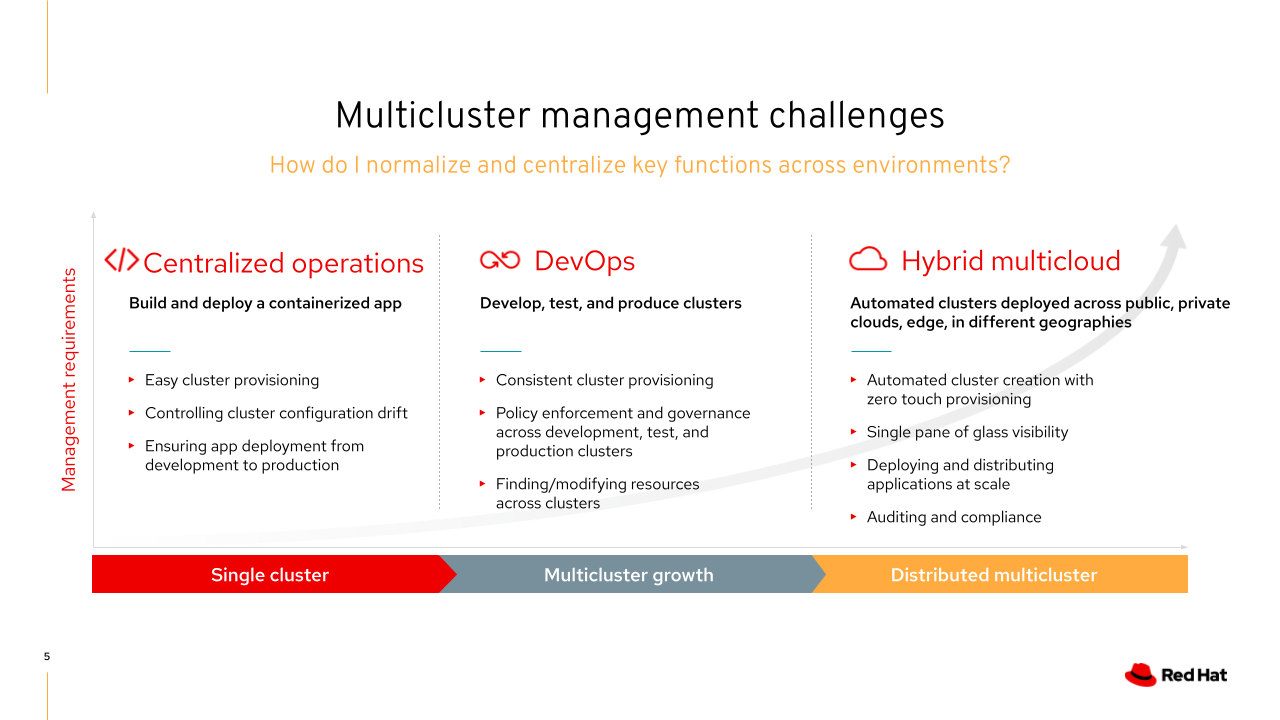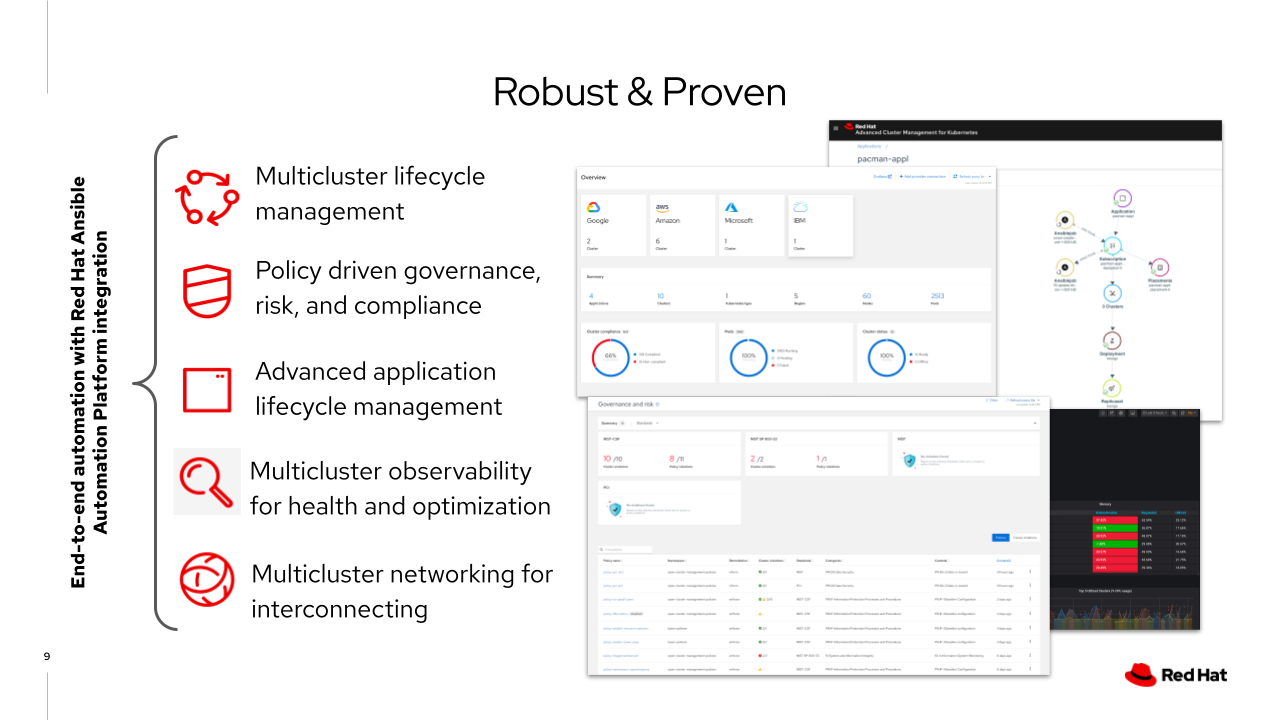Topic Objectives
In this topic we will discuss:
-
Why manage multiple clusters
-
Red Hat Advanced Cluster Management for Kubernetes Basics
-
Managed Cluster Groups
-
Other Considerations
Kubernetes adoption leads to multicluster
“As Kubernetes gains adoption across the industry, scenarios are arising in which I&O teams are finding they must deploy and manage multiple clusters, either in a single region on-premises or in the cloud, or across multiple regions….for a number of reasons, including multi-tenancy, disaster recovery, and with hybrid, multicloud, or edge deployments.”
Multi-Cluster Challenges

-
This increase of clusters presents challenges to organizations responsible for managing these clusters.
-
The infrastructure/operations teams that are responsible for ensuring the deployment, configuration and management of these clusters will need the proper tools.
-
The DevOps teams will need clusters to develop their applications and will have increasing requests for more resources and consistency across clusters.
-
The Organization as a whole will need to have multiple target environments in which to deploy clusters.
-
In high volume scenarios the clusters might need to be created in cloud providers depending on cost and resource availability.
-
This presents a challenge where a central management tool is needed to ensure that operators can deploy, maintain and manage resources.
Multi-Cluster Management Options
-
You can do it manually using custom scripts
-
This presents many challenges as scripts are homegrown and maintainability can become an issue.
-
-
You can use ArgoCD to a degree
-
ArgoCD’s forte is to declaratively deploy applications onto a Kubernetes cluster not manage clusters.
-
-
Use Red Hat Advanced Cluster Management for Kubernetes which is built to manage multiple clusters
What is Red Hat Advanced Cluster Management for Kubernetes
Red Hat® Advanced Cluster Management for Kubernetes controls clusters and applications from a single console, with built-in security policies. Extend the value of Red Hat OpenShift® by deploying apps, managing multiple clusters, and enforcing policies across multiple clusters at scale. Red Hat’s solution ensures compliance, monitors usage, and maintains consistency.
For more information visit: Advanced Cluster Management

-
Multi-Cluster Lifecycle Environment:
-
You can centrally create, update and delete Kubernetes clusters across multiple private and public clouds
-
Search, find and modify any kubernetes resource across the entire domain.
-
Quickly troubleshoot and resolve issues across your federated domain
-
-
Policy Driven Governance
-
Centrally set & enforce policies for security, applications, & infrastructure
-
Quickly visualize detailed auditing on configuration of apps and clusters
-
Built-in CIS compliance policies and audit checks
-
Immediate visibility into your compliance posture based on your defined standards
-
-
Advanced Application Lifecycle
-
Easily Deploy Applications at Scale
-
Deploy Applications from Multiple Sources
-
Quickly visualize application relationships across clusters and those that span clusters
-